 By Staff By Staff
March 26th, 2019
BURLINGTON, ON
We now know a little bit more about what will be on display at the Joseph Brant Museum when it opens in July – which is the target date.
There will be three permanent galleries that explore Burlington’s rich history and heritage.
One of these will be The Costume Gallery, contextualizing social history during the ‘40s, ‘50s and ‘60s, and focusing on the famous Brant Inn and the Big Band Era.
 Often described as putting Burlington “on the map”, the Brant Inn featured many legendary entertainers such as Louis Armstrong, Benny Goodman and Ella Fitzgerald. Often described as putting Burlington “on the map”, the Brant Inn featured many legendary entertainers such as Louis Armstrong, Benny Goodman and Ella Fitzgerald.
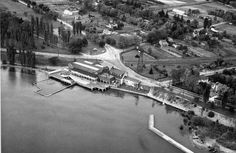 An aerial view of the Burlington Inn in what is now Spence Smith Park. There was a time when Burlington was on the map, at least for the entertainment sector. The Brant Inn was the place to be seen and if you were a musician the place to be heard.
Why did it fail as a commercial operation?
The owner died, a member of what was an extended family took over day to day operations and things were never the same.

“The legislation is being implemented before parliamentary debate has even concluded and prior to any public hearings. The government created the Super Agency. It held its first secret meeting. The government dissolved the Boards of 20 existing agencies.
Yet the legislation has not even passed. Not only this but all public input and procedural protections that existed in previous legislation have been removed from this legislation which has been subject to no public consultation process prior to drafting.”
(March 18, 2019 – Natalie Mehra, Executive Director – Ontario Health Coalition)
 By Ray Rivers By Ray Rivers
March 22, 2019
BURLINGTON, ON
I know what you’re thinking. If it worked for garbage why not provincial health care? Right?
Premier Ford’s younger brother Rob’s claim to his fame, besides his crazy antics which put Toronto on the front pages everywhere, was privatizing a part of Toronto’s garbage collection system to save money.
 Bye bye local health care oversight. So why not use the same tried and true formula with health care? Of course there is already substantial private sector involvement in Ontario’s health system, such as long term care, blood labs, and most doctors. Still, the opposition at Queen’s Park is convinced Doug’s plan is more privatization.
And that might account for why Ford and his team are busy willy-nilly disassembling and dismembering Ontario’s entire health-care apparatus. That and because those damned Liberals designed and implemented the system. Cripple the organization, create a crisis, then call in the consultants from south of the border to clean up the mess.
And they’ll tell you the other kind of privatization is the answer. That would be the kind that violates the Canada Health Act – extra billing for health care services and opening the door to two-tier health care. After all Mr. Ford seems to enjoy giving his middle finger to the feds when it comes to national programs.
The problem is we don’t know. And Ford is not telling. That might be because he doesn’t even know. Perhaps he hasn’t had time to put it all together, given it’s only half a year since the election, and re-inventing health care is not something you do in an afternoon. Then it could be the advice he’s getting from his crony, the guy with nearly a half-million dollar sole-source consulting contract, his old friend Dr Rueben Devlin.
 And how are we liking this government so far? Are we paying attention? 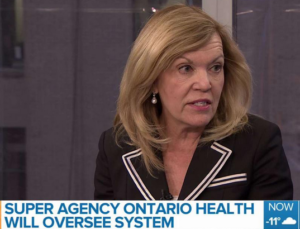 Christine Elliott – Minister of Health What we do know is that a super agency has been created, and everything is to be managed and controlled out of this super agency. Think of the irony, Ford the Marxist-hater building a Soviet-style centralized bureaucracy. Just about everything, including the world renowned Cancer Care Ontario has now been merged and lumped into this one oversized box.
The government has shut down the 14 local integration networks, the LHINs, which managed and allocated half of the provincial $60 billion budget among the competing demands from hospitals, long term and home care agencies. They will get their local budgets dictated from Toronto now.
There is mention of 30 or 50 voluntary regional health teams somewhere in the future to partly replace the LHINs. But it is anyone’s guess how they would work, given their limited roles. And it is hard to imagine how 30 administration units would be less costly than the 14 that have just been eliminated.
 If the government drops a ball – who gets hurt? No question there are a lot of balls in the air. And they’re going to stay up there for at least another three years according to Christine Elliott, the health minister. In the meantime, I guess it’s muddle through, the squeaky wheel gets the bed pan, and before you know it’ll be time to re-invent the system. That would take us to the next election and perhaps the next government.
‘Create a crisis’ was the marching song of the last PC government in Ontario. And it sure looks like create-a-crisis Mike is back in town, and back in charge, at least in spirit. Harris presided over the worst health care this province ever experienced. The longest hospital wait times in the country; cardiac patients literally dying in hospital corridors waiting for surgery; and cancer patients being bussed to Buffalo and Detroit for treatment.
According to the provincial auditor Harris’ restructuring efforts from 1996 to 2000, intended to bring common sense to the provincial health system, cost $3.9 billion mainly to lay off nurses and staff, close down local services, then rebuild them elsewhere. And his system savings amounted to only $800 million, leaving all of us in the hole.
We should be concerned and maybe even panicked at what is going on now, at how rapidly these changes are happening, at how little analysis has been undertaken, and at how little consultation has taken place. Even the official opposition seems overwhelmed, gob smacked or just sleeping. There have been no public hearings on any of these proposed changes or on the changes yet to come.
 Rivers on Ford: “That might be because he doesn’t even know. Perhaps he hasn’t had time to put it all together, given it’s only half a year since the election…”, There is no provincial program more important than health care. And that is particularly true for senior Ontario residents – those most in need of its services. It is the largest public expenditure item using up 40 cents of every tax dollar.
During the election campaign Ford bragged about how he was going to fix hallway healthcare by adding hospital and long term care beds. So far we haven’t heard of him doing any of that. Instead he is acting like God, creating a new universe of health care delivery out of the ruins of the one he is dismantling.
Mr. Ford may think he is inventing the wheel, but unless he is a miracle worker, he is just fixing what isn’t broken. He inherited a system with the shortest wait times and lowest costs of delivery per person in the country. He’d better not trash it.
 Ray Rivers writes regularly on both federal and provincial politics, applying his more than 25 years as a federal bureaucrat to his thinking. Rivers was once a candidate for provincial office in Burlington. He was the founder of the Burlington citizen committee on sustainability at a time when climate warming was a hotly debated subject. Ray has a post graduate degree in economics that he earned at the University of Ottawa. Tweet @rayzrivers Ray Rivers writes regularly on both federal and provincial politics, applying his more than 25 years as a federal bureaucrat to his thinking. Rivers was once a candidate for provincial office in Burlington. He was the founder of the Burlington citizen committee on sustainability at a time when climate warming was a hotly debated subject. Ray has a post graduate degree in economics that he earned at the University of Ottawa. Tweet @rayzrivers
Background links:
Ontario Health Coalition – Elliott – Toronto Garbage –
Super Agency – Regional Teams – Cancer Care –
A Sick Feeling – Privatization – Two Tier –
Social Assistance – Grifter Government – No Consultation –

 By Staff By Staff
March 21st, 2019
BURLINGTON, ON
The news is that the Burlington’s Best award will be given this May for the last time.
There were 28 nominations in eight categories.
Nominations closed March 7, 2019.
The Best is an awards program that honours Burlington’s most outstanding citizens. The winners in all categories will be revealed at the awards celebration on Wednesday, May 8, 2019, at the Burlington Performing Arts Centre.
This year’s nominees are:
 Citizen of the Year Citizen of the Year
Jere Hartnett
Karen Phelps
Fareen Samji
Junior Person of the Year
Connor Clark
Ana Cunha
Keziah Oduro
Noor Toeama
Joel Wakem
 2017 BEST winners Senior Person of the Year
Ona Allen
Trudy Csernyei
Sue McBay
Robert Redhead
Alan Stupart
Environmental Award
Salma El Ali
Iroquoia Bruce Trail Club
Arts Person of the Year Award
Gary Fisher
Cheryl Goldring
Sarah Gonyea
Gery Puley
Hayley Verrall
 2016 BEST winners Community Service Award
Kevin Andrews
Kathy DeSantis
Dani Heroux
Greg and Andrea Howard
Jeff Moseley-William
Heritage Award
Joan Downey
Marie Minaker
Accessibility Award
None
Tickets to this event are $35 per person. A dessert reception will follow the awards ceremony. Tickets can be purchased at the Service Burlington counter at City Hall, 426 Brant St., or by contacting Briar Allison at 905-335-7600, ext. 7458 or briar.allison@burlington.ca.
One winner will be selected in each of the award categories.

 By Staff By Staff
March 21st, 2019
BURLINGTON, ON
Walking is a healthy exercise. It is also a time when you can think and wonder at all the things we have going for us and worry a little about the problems.
Walking with a friend is one of the most civil things a person can do.
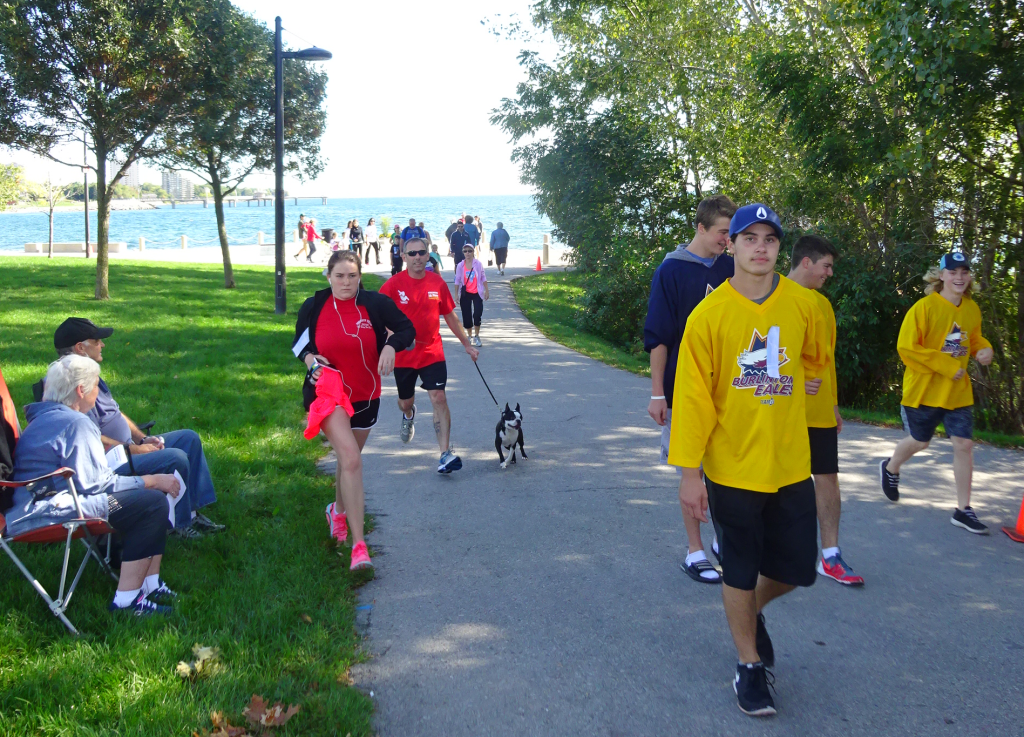 Just out for a walk. Burlington is encouraging members of the community to take steps toward better health with Just Walk Hamilton-Burlington, an outdoor community walking program led by local healthcare professionals and funded in part through the City’s Neighbourhood Community Matching Fund.
Join registered Kinesiologist Jordan Kilpatrick-Smith for a free, fun and supervised walk on Saturday, March 23 at 9 a.m. through Nelson Park and Sherwood Forest Park. Kilpatrick-Smith and the Just Walk team will meet community members at the Nelson Park parking lot located behind the Nelson Arena near the baseball diamonds (4183 New St., Burlington).
The walk will begin with a short educational talk titled, “Healthy Weight Loss to Gain Time, Money and Energy” followed by a guided walk at your own pace. Each walk is open to all abilities and pre-registration is not required.
Join the Just Walk group’s email list at justwalk-hb.weebly.com for information on upcoming walk dates and locations.
The group will be hosting 12 walks in Burlington between February and September.

 By Pepper Parr By Pepper Parr
March 21st, 2019
BURLINGTON, ON
The federal budget that was introduced on Wednesday in the House of Commons doesn’t get treated as top of the page new by most people.
The people at city hall found themselves paying attention when they learned that the gas tax the federal government gives the city usually has strings attached to it – this time the gas tax total was bumped up by $5.6 million – which covers a lot of infrastructure repair and upgrading.
This was good news for the City of Burlington
Yesterday’s federal budget included municipal top-up funding to support local infrastructure priorities. The City of Burlington will benefit from the one-time doubling of the Federal Gas Tax funding, which will result in an extra $5.6 million for infrastructure.
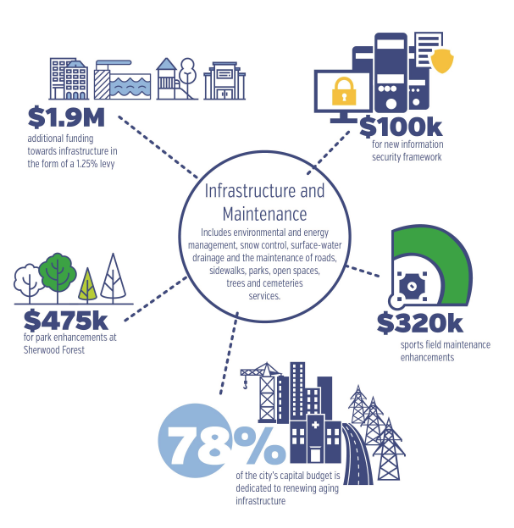 This is where infrastructure money has been spent in the past. The federal funding will certainly help. Federal Gas Tax funding can be used in eligible categories including productivity and economic growth through areas such as roads, bridges or public transit, clean environment initiatives such as community energy systems or strong cities and communities via sport, recreation, culture, tourism or disaster mitigation.
City staff will bring a report to the Monday, April 1 Committee of the Whole meeting at 1 p.m. with recommended projects related to this.
Mayor Marianne Meed Ward has been speaking with federal colleagues and confirmed that Burlington will get that additional $5.6 million in one-time funding and that it will be free of the usual restrictions we see from Gas Tax cash payments.
“This funding can be spent on infrastructure, on our roads, transit, brownfield redevelopment, sports, tourism and disaster mitigation, to name a few. City staff will begin working on a report to lay out the best uses for these funds for Council’s consideration.”
There is an opportunity here for citizens to float some of their ideas on what can be done with that additional $5.6 million. Don’t leave it up to city hall stuff to come up with the ideas. It’s your city – let both your council member and the Interim city manager how you would like to see those dollars spent – that’s was being engaged is all about.
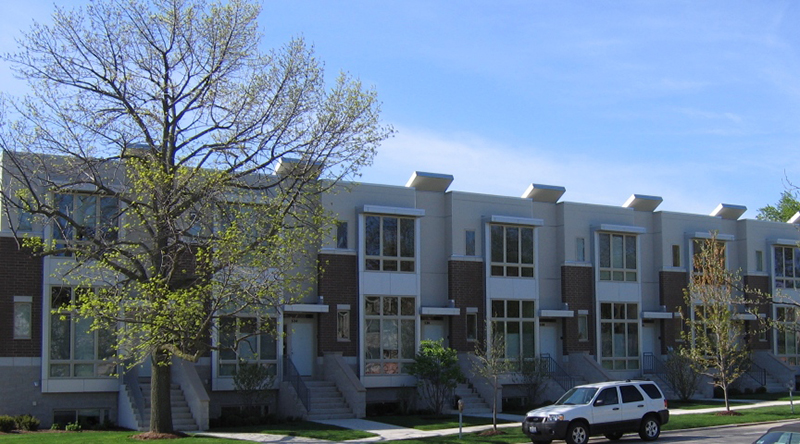 The chances of affordable housing in Burlington looking like this are slim – land costs are just too high. The city is going to have to think in terms of high rise – something in the order of 7 to 11 storeys. Mayor Meed Ward is “getting more details around the proposed $300 million to launch a Housing Supply Challenge that encourages municipalities to come up with innovative ways to grow its housing supply. She wants to make sure Burlington has access to these funds and adds that this “will certainly help us meet the growing need of affordable housing in our city.”
Real citizenship engagement:
There is an opportunity here for citizens to float some of their ideas on what can be done with that additional $5.6 million.
Don’t leave it up to city hall staff to come up with the ideas. It’s your city – let both your council member and the Interim city manager how you would like to see those dollars spent – that’s was being engaged is all about.

 By Staff By Staff
March 20th, 2019
BURLINGTON, ON
Reports of sexual assaults in the city are on the rise.
 On Saturday March 16th 2019, Detectives with the Child Abuse and Sexual Assault Unit (CASA) commenced an investigation after a 23 year old female reported that she had been sexually assaulted in the area of Lakeshore Rd. and Elizabeth Street in the City of Burlington. On Saturday March 16th 2019, Detectives with the Child Abuse and Sexual Assault Unit (CASA) commenced an investigation after a 23 year old female reported that she had been sexually assaulted in the area of Lakeshore Rd. and Elizabeth Street in the City of Burlington.
The victim advised that she met the suspect on the dating app “HINGE” and he identified himself as “Giovanni VINCENTE”. The victim attended a local establishment with the suspect before accepting a ride in his vehicle. The victim was driven to the above mentioned location at approximately 11:30pm, where she was sexually assaulted.
The suspect is described as male, 26 years, olive complexion, 6’3″, 220lbs, short sandy blonde hair with a beard and was wearing a camouflage shirt and jacket. The suspect was driving a newer model black four door Volkswagen.
Police are asking anyone with information regarding this or similar incidents to contact the Child Abuse and Sexual Assault Unit – Detective Sergeant Chris Newcombe at 905-465-8965 or Detective Constable Mark Werner at 905-465-8747.
Tips can also be submitted to Crime Stoppers “See Something? Hear Something? Know Something? Contact Crime Stoppers at 1-800-222-8477 (TIPS), or through the web at www.haltoncrimestoppers.ca
Earlier in the week a sexual assault on Elgin at Burlington Avenue was reported.
Link to related news story:
Earlier sexual assault.

 By Ray Rivers By Ray Rivers
March 20th, 2019
BURLINGTON, ON
This was unquestionably an election-year budget, with lots of little goodies sprinkled about for most Canadians. And it is costly with a still hefty on-going deficit. But is it too costly?
Newly minted People’s Party leader Maxime Bernier said it was “… irresponsible …because it’ll be future generations that will have to pay for it. They want to buy votes and that’s not the way to do politics — with people’s money.”
 They want you to buy this book. Mr. Morneau would probably argue the opposite. That is what government is all about – using our collective wealth for the betterment of us all. He claimed that his choice to deficit spend when interest rates were low, and even during good times, has resulted in a much healthier economy than when the Liberals replaced the Tories almost four years ago.
And the country now has the lowest unemployment rate in forty years. Management of the economy, or luck, has also resulted in a spectacular increase in the revenues flowing into government, to quote bank economists.
The government takes a longer term approach to debt management, targeting its debt performance as a percentage of GDP. And the ratio is declining according to the budget forecasts. Canada’s debt, unlike other nations in the G7, is largely held by Canadians, reducing the risk of foreign influence in our domestic economy.
New spending programs in the budget may seem like crumbs to neophyte NDP leader Jagmeet Singh. But every budget is a balancing act and this budget is very much about further support for the middle class and young starter families in particular. This is consistent with the strategy the Trudeau government has adopted since first coming to office.
They are offering a $5000 consumer rebate on electric car (EV) purchases and an immediate capital write-off for businesses purchasing EVs. That is the glove on the hand of the national carbon tax, providing an option to reduce the impact of the upcoming carbon tax, and freeing up annual carbon tax rebates for other purposes. There is a $45,000 limit on the vehicle value which should encourage auto makers to get more affordable EVs into the market place.
Nobody should argue about more money being allocated to municipalities for infrastructure. And who would quarrel with greater assistance for indigenous child welfare and indigenous drinking water improvements?
Nor should anyone quibble with more resources to protect our election systems from cyber threats. There is even more money for the RCMP and for the public prosecutor, the one who declined to exercise the SNC remediation agreement.
 Andrew Scheer, Jagmeet Singh or Justin Trudeau – one of them will be Prime Minister. Will that person lead a minority government? The government is taking first steps towards a national pharmacare program and developing a program to provide support to Canada’s beleaguered media industry and its fledgling digital information platforms. Details are still somewhat vague but one can see echoes of Justin’s father, and how he enabled Canada to become a major player in the global entertainment industry.
On the other shoe of climate change, there will be more money for emergency natural disaster relief. And given what has just taken place in New Zealand, the government will be allocating resources to protect community gathering places from hate crimes.
This is an election year budget and the message is ‘steady-as-she-goes’ but with some new seeding of the bare spots. The federal budget ended up overshadowing another election year event – an Alberta throne speech followed by an announcement of an election date. The NDP’s Rachel Notley is in the fight of her life against United Conservative party’s Jason Kenny, who has been implicated in some messy election corruption of late.
Notley is promising more industrial diversification to ready the economy for the day when oil will no longer be its mainstay. Kenny wants to turn the clock back to when oil was king, cancelling the carbon tax and cutting taxes for corporations and the wealthy.
Kenny and his Ontario buddy Mr. Ford define right wing politics in this country. Maxime Bernier is probably well intentioned, but a bit of an amusement as he gropes to find his way around the religion of Libertarianism. And he is still pretty much alone, though with aspirations to convert more tribal Conservatives over to his camp. And Preston Manning would be his model.
Mr. Scheer, on the other hand is turning out to be an embarrassment to the great, and even not so great, Tories who came before him. He is doing himself no favours banging on about SNC and treating Jody Wilson-Raybould as if she were a fellow Tory instead of a committed Liberal.
Sometimes one has to wake up smell the coffee and recognize reality.
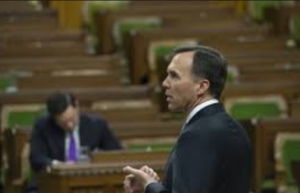 During delivery of the budget speech the heckling was so intense that Morneau could not be heard – the the Conservatives cleared the opposition benches and left the House. His antics in the House of Commons during the budget presentation, which again failed, sum up why his personal popularity as a leader pales behind that of the PM. Railing on like a angry person, sending letters to the RCMP, calling on the PM to resign, etc. won’t convince Canadians that he’d make a good PM. Clowning can be amusing, and annoying, but it won’t get him into the PM’s office.
As we head into the 2019 election, it would be fair to ask where Scheer stands on the issues that really matter to Canadians and where is his platform. It has been over a year since he promised to deliver a climate change action plan as an alternative to the federal carbon tax. Isn’t it about time he put his money where his mouth is, or let somebody more competent take on the job of party leader?
Surely one would expect the leader of the official opposition to be in the Commons chamber to listen to the annual budget being presented. It’s more than just being polite. Instead Scheer was hiding in the halls, playing politics.
 Ray Rivers writes weekly on both federal and provincial politics, applying his more than 25 years as a federal bureaucrat to his thinking. Rivers was a candidate for provincial office in Burlington where he ran against Cam Jackson in 1995, the year Mike Harris and the Common Sense Revolution swept the province. He developed the current policy process for the Ontario Liberal Party. Ray Rivers writes weekly on both federal and provincial politics, applying his more than 25 years as a federal bureaucrat to his thinking. Rivers was a candidate for provincial office in Burlington where he ran against Cam Jackson in 1995, the year Mike Harris and the Common Sense Revolution swept the province. He developed the current policy process for the Ontario Liberal Party.
Background links:
Deficits – Budget – Scheer Disruption– More Budget –

 By Pepper Parr By Pepper Parr
March 19th, 2019
BURLINGTON, ON
The Glenwood School Drive community, located west of Guelph Line and north of the GO line is back in the news.
Five years ago the residents got some relief for a bridge that some thought was going to fall down – but they had to fight for every yard they gained in the battle with their city council.
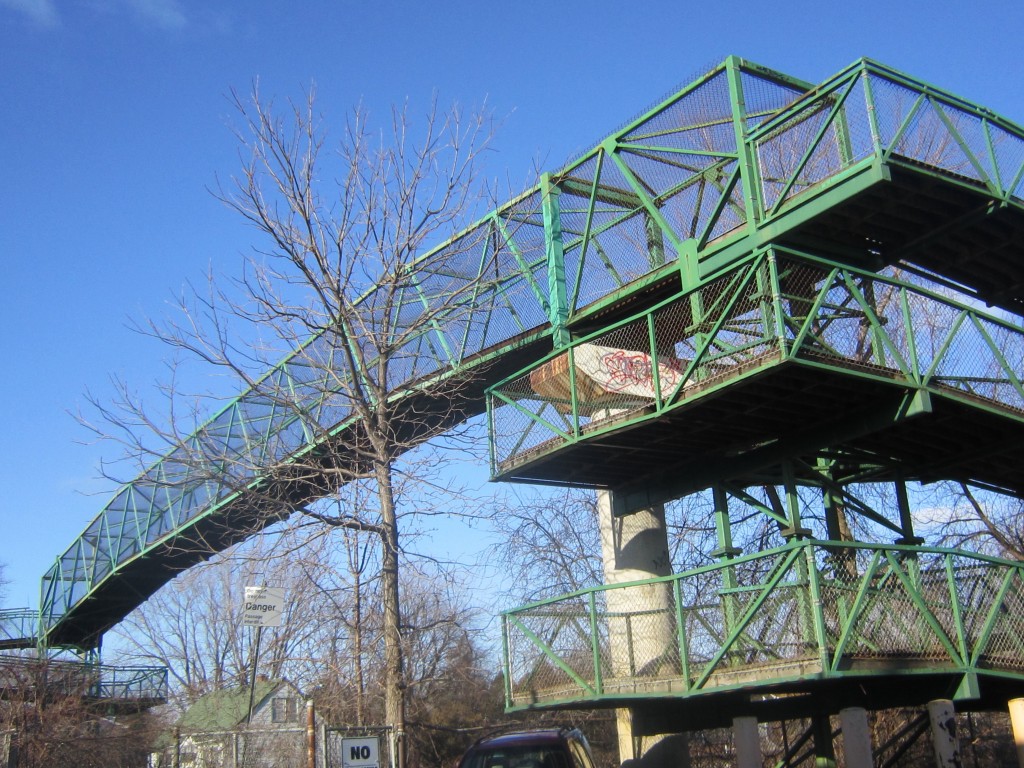 Built in the 70’s to allow people from the Glenwood School Drive community to get to shops and community amenities the bridge was declared unsafe in 2012 – fixed at a cost of $380,000. No longer safe for the public to use, the Drury Lane pedestrian bridge was closed in November of 2011. The estimate at the time to replace the bridge was $2 million to re-build and $380,000 to put on a five year patch.
An inspection of the structure, that was first put up in 1972 and modified and repaired a number of times since then, was found to be unsafe.
Suddenly a community that is basically landlocked, found that it had to take trips that required 55 minutes as opposed to the normal 20 minutes. Parents found they could not get their kids to school on time.
A community that used to have a way out to commercial Fairview and south to the commercial core was suddenly floundering to figure out how they were going to get around and, more significantly, how they were going to deal with a city council that seemed to have forgotten all about them.
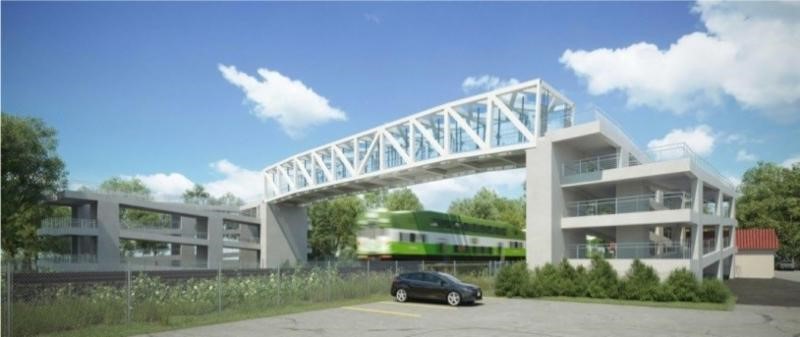 Rendering of the proposed new Drury Lane pedestrian bridge Last week MetroLink announced plans for a new bridge – the old bridge could not handle the electrification of the GO Lakeshore Line West.
Merolinx will be picking up most of the cost – basically because the bridge has to be raised so that electrification can be done on the GO Lakeshore West line.
Related news story:
Patching the bridge in 2012 – council decision making at its worst.

 By Staff By Staff
March 19th, 2019
BURLINGTON, ON
Every year for the past 15 years the Halton District School Board has showcased the artistic talent of Kindergarten to Grade 8 students The presentation fills the Brock Room at the New Street Education Centre on 3250 New St, Burlington.
The popular event will showcase the artistic talent of Kindergarten to Grade 8 students, with various styles of artwork displayed including paintings, sculptures, puppets, paper maché, crayons, pastels, ink, fabric, 2D and 3D pieces.
 From the hands of an elementary school student.  Student took a discarded circuit board and turned it into a statement about where people live. The exhibit pieces are selected by teachers to highlight art curriculum expectations. The purpose of the Elementary Art Show is to showcase student artwork and hopefully inspire and encourage others to pursue creative endeavours.
More than 1,000 students, teachers, parents/guardians, and community members are expected to visit the Elementary Art Show to tour the works of art over the course of the three-day exhibit. Professional artists from the Art Gallery of Burlington will demonstrate different artistic techniques such as pottery, weaving, spinning, photography, fine art and more. The artists will provide students with hands-on opportunities to show them how art can have a place in their future.
 Rebecca MacRae, Instructional Program Leader – The Arts “Elements and Expressions displays the self-expression, imagination and artistic mindset of our young Halton artists,” says Rebecca , Instructional Program Leader – The Arts for the Halton District School Board. “The pieces in this exhibit show the range of art disciplines the students explore with their visual arts teachers. Through the creation of art, students explore their ideas and imaginations and connect to their own realities.”
Student artwork will be on display during the following times:
• Tuesday, March 26 from 9 a.m. – 4 p.m. and 6 p.m. – 9 p.m.
• Wednesday, March 27 from 9 a.m. – 4 p.m. and 6 p.m. – 9 p.m.
• Thursday, March 28 from 9 a.m. – 4 p.m. and 6 p.m. – 9 p.m.
• Friday, March 29 from 9 a.m. – 12 p.m.

 By Staff By Staff
March 18th, 2019
BURLINGTON, ON
Karina Gould joins a community of Young Global Leaders.
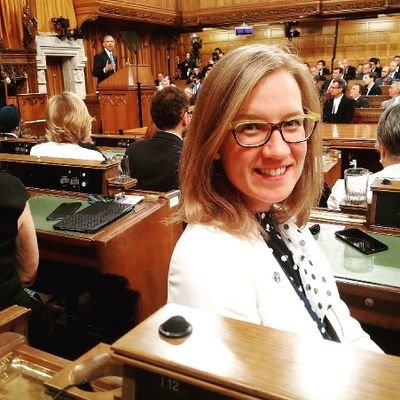 Karina Gould in the \House of Commons with former President |Barack Obama addressing the House. Last week, the World Economic Forum informed Gould that she would be joining this year’s class of Young Global Leaders and would be one of five representatives from Canada this year.
The Class of 2019 consists of 127 leaders from around the world, including the most decorated Olympian female swimmer of all time, the managing director of a leading supermarket chain looking to ban plastic packaging and the CEO of YWCA Canada.
Gould is the Minister of Democratic Institutions and Member of Parliament for Burlington.
The Forum of Young Global Leaders was created in 2004, to fuel new models of leadership. Each year, the organization looks for individuals from around the world who are change makers with the grit, foresight and potential to improve the state of the world.
The mission of the Forum for Young Global Leaders is to create a dynamic global community of exceptional people with the vision, courage and influence to drive positive change in the world.

 By Staff By Staff
March 18th, 2019
BURLINGTON, ON
 On Friday March 15th, 2019, at approximately 8:45 pm, a female in her 30s was walking in the area of Elgin Street and Burlington Avenue. An unknown male suspect walked past her several times before finally approaching the victim at which time he grabbed onto her arms and began shaking her. On Friday March 15th, 2019, at approximately 8:45 pm, a female in her 30s was walking in the area of Elgin Street and Burlington Avenue. An unknown male suspect walked past her several times before finally approaching the victim at which time he grabbed onto her arms and began shaking her.
The victim struggled with the male and shouted loudly for help forcing him to let go and calmly flee the area. He was last seen walking westbound on Elgin Street. The victim did not sustain any physical injuries.
This is the first report of this nature and police do not feel public safety is at risk, however will continue to provide extra patrols in the area.
Suspect Description: Male, tanned complexion, brown beard, brown eyes, mid to late 20’s, average build and approximately 5’5″ in height.
Clothing Description: Black jacket with a hood, dark coloured pants, headphones and a backpack (possibly black).
The suspect has yet to be identified. Any witnesses, anyone who resides or has businesses in the area of Elgin Street and Burlington Avenue with video surveillance images or anyone who was traveling in that area that has dash cam video images between 8:00 pm and 9:00 pm are asked to call the Halton Police at 905-825-4777 or the 3 District Criminal Investigations Bureau at 905-825-4747 ext. 2316.
Tips can also be submitted to Crime Stoppers “See something? Hear something? Know something? Contact Crime Stoppers” at 1-800-222-8477 (TIPS) or through the web at www.haltoncrimestoppers.ca

 By Staff By Staff
March 18th, 2019
BURLINGTON, ON
It won’t be long now.
On March 13, the AGCO announced that it had issued a cannabis Retail Operator Licence to David Nguyen.
Today, his store RELM Cannabis, located in Burlington, has received its Retail Store Authorization.
Once a Retail Store Authorization has been issued, the licensed operator may finalize their store set-up, including ordering and receiving cannabis product and cannabis accessories into their store ahead of opening for business.
The AGCO must still conduct a pre-opening inspection to ensure the operator is ready to open for business and sell cannabis products to the public in accordance with the Cannabis Licence Act, 2018, its regulations and the Registrar’s Standards for Cannabis Retail Stores.
The retail outlet will be at 4031 Fairview St., unit 103. The location is just east of Walkers Line.
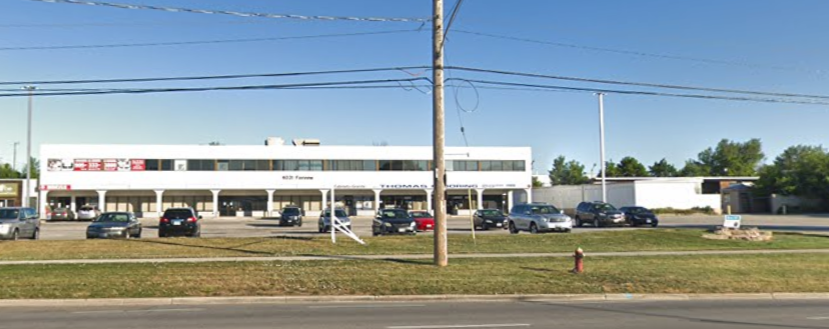 Fairview – just east of Walkers Line 
 By Staff By Staff
March 18th, 2019
BURLINGTON, ON
 They expanded and extended the program they sponsor in Burlington. The city has Rolled up the Rim and found they were a winner to the tune of $112,500 in expanded sponsorship funding from the Tim Horton organization that will run through to 2022.
Their sponsorship will include Free Family Day skating to begin 2020. Tim Hortons sponsorship of swimming, skating and events helps to break down barriers, encourages access and participation for everyone. The total three-year investment from Tim Hortons is just over $112,500.
Tim Hortons Free Holiday Skating
Tim Hortons sponsorship of free holiday skating began in Burlington 25-years ago and has spread to more than 200 communities across Canada.
The 2019-2020 season will begin again in December and run for three-weeks throughout the holiday season to provide over 74-hours of free skating throughout the city.
Tim Hortons Free Family Day Skating
Four hours of free Family Day skating will begin on Family Day in 2020.
Tim Hortons Free Summer Swimming
64-hours of free swimming will take place throughout the summer at both indoor and outdoor pools at various locations.
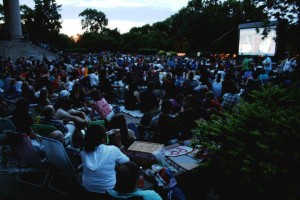 Movies Under the Stars Movies Under the Stars
Movies Under the Stars will run from July to August at various parks throughout the city and offers seven free movies. Residents are encouraged to bring a healthy snack, blankets, chairs and other amenities to enjoy with their family and friends.

 By Staff By Staff
March 18th, 2019
BURLINGTON, ON
Part of the campaign promise is being delivered. The Mayor is rolling out a Red Carpet hoping to attract the business community,
 Mayor Marianne Meed Ward is going to hold a Town Hall at the Waterfront Hotel on March 28th from 8 am to 9:30 am. to address red tape and the impact it is having on economic growth. Mayor Marianne Meed Ward is going to hold a Town Hall at the Waterfront Hotel on March 28th from 8 am to 9:30 am. to address red tape and the impact it is having on economic growth.
She will be joined by Kelvin Galbraith, Councillor for Ward 1 and the member of council with the deepest small business experience.
They want to hear what business people have to say – what are the problems; what are the solutions?
Business people are being asked to share their stories, challenges, and ideas for helping remove the obstacles to growth and business attraction in Burlington.
Space is limited – register (it’s free) HERE.

 By Pepper Parr By Pepper Parr
March 18th, 21019
BURLINGTON, ON
The province announced major changes in the way education is going to be delivered to elementary and high school students in the province.
They want to take the cell phones out of the hands of students.
They want to get ‘Back-to-Basics’ Math Curriculum, Renewed Focus on Skilled Trades and STEM – Science,Technology Engineering and Mathematics curriculum.
The Halton District School Board HDSB is more than a couple of steps ahead of the province. In September they will open the first part of the iStem program at Aldershot High School. A total of 124 students have registered in a program that has taken two years to create.
Terri Blackwell, Superintendent of Education said “after extensive consultation with parents, staff, post secondary partners, industry leaders and students in the 2017-2018 year lead to the Innovation – Science, Technology, Engineering and Mathematics (iStem) Program at Aldershot. This past year we have been working closely with an outstanding Advisory Group consisting of post secondary partners, community organizations and industry leaders.
“The Engineer’s Toolkit in grade 9, the Entrepreneur’s Toolkit in grade 10 and the Global Innovator’s Toolkit in the senior years was developed in partnership with our ever growing Advisory Group. With a focus on Innovation (the “I” in iStem), students will contribute and thrive in our technologically intensive world through interdisciplinary learning opportunities connecting Science, Technology, Engineering and Mathematics (STEM). Learning in the classroom will be paired with experiential learning and mentorship with the community and workplace.”
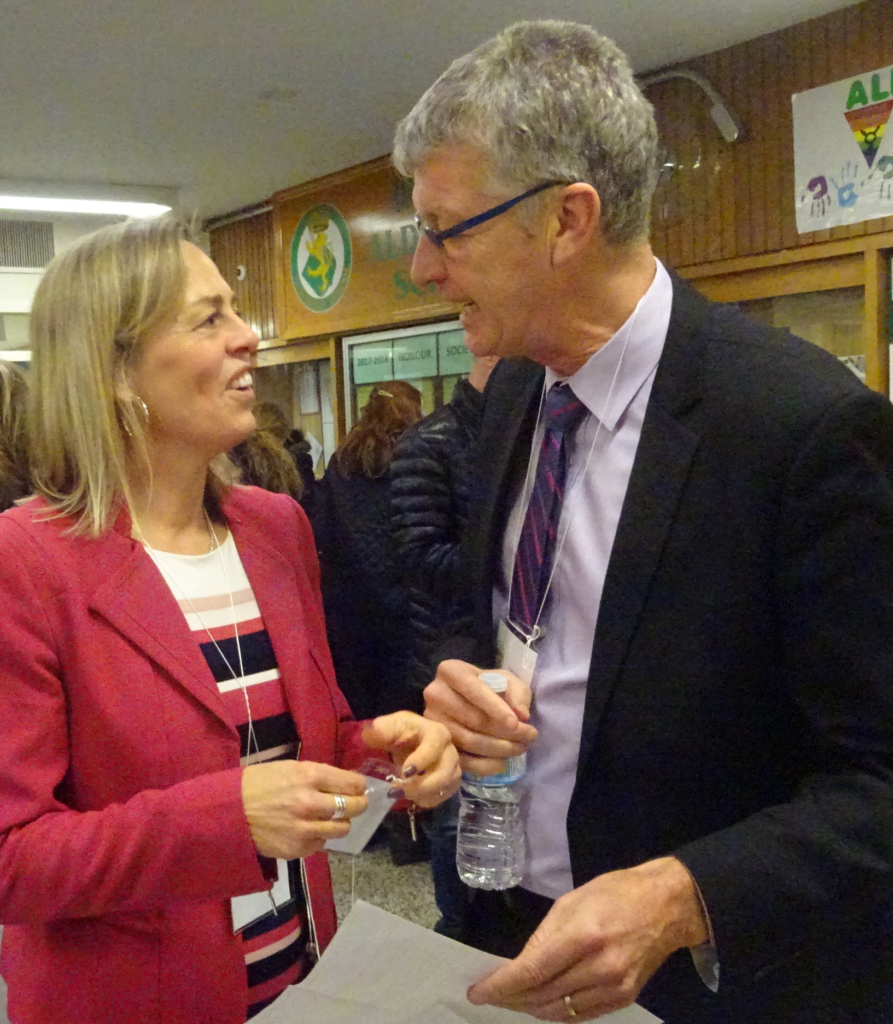 Halton District School Board Superintendent Terri Blackwell and Director of Education Stuart Miller at the first parent night announcing the program. Blackwell added: “As part of the application process students were asked to respond to a number of questions: “What is one problem you would like to solve or big question you would like to explore as part of your learning in the iStem program?”.
“We were inspired by the responses from students and will continue to build learning opportunities with input from them.”
Director of Education Stuart Miller said: The Minister of Education has spoken previously about the need for more opportunities for students to pursue an iStem curriculum.
We are very proud at the HDSB that we have gotten out in front of the province’s direction. Almost two years ago we began the process of enhancing the program at Aldershot High School by focusing on iStem (i being for innovation) commencing in September 2019. Through the work of many staff, but in particular Superintendent Terri Blackwell we have forged relationships with post secondary institutions and some private companies in helping us develop it. We have had tremendous interest from not just the community, but also beyond and as a result we will see a large increase in the number of students attending Aldershot in September enrolled in iStem.
“More importantly we will be preparing these students to pursue many opportunities beyond High school related to all things iStem.”
The provincial media release on changes coming to education covered much more than iStem.
All the buzz words that the PR types the government has hired are in the province’s Media Release. “We will make sure our students are leaving school with the skills they need to build good lives, families and careers right here in Ontario, while ensuring the system is both fiscally sustainable and respectful of parents.”
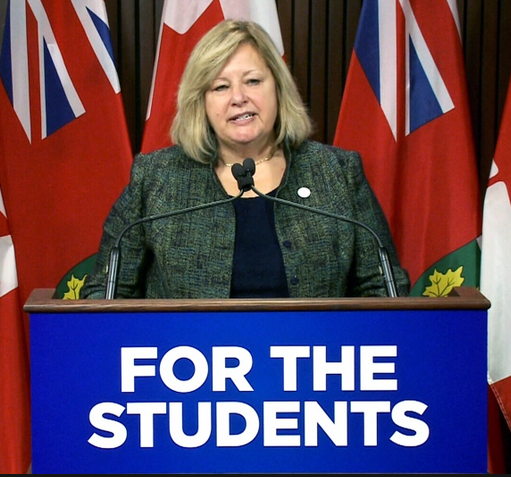 Minister of Education Lisa Thomson “The new vision will modernize Ontario’s classrooms and provide students with more learning opportunities to prepare them for success in post-secondary education, apprenticeship and training, and the workforce. The plan would include:
Modernizing classrooms by expanding broadband, developing a new policy that will ban the use of cellphones during class except for educational purposes and modernizing the approach to assessment and evaluation with a renewed focus on equity across the province.
Introducing changes to education funding that keep resources focused on students in the classroom.
Supporting teacher mobility, greater transparency, fairness, consistency and accountability to school board hiring practices of teachers.
Maintaining class sizes for Kindergarten to Grade 3, establishing a consistent approach to class sizes for grades 4 to 8 and aligning secondary class sizes more closely with other Canadian jurisdictions, while introducing a new approach to e-learning and reducing pressure on school boards to put students in portables and split classes.
Undertaking curriculum reform that will include:
A new math curriculum that will focus on math fundamentals for all grades;
A renewed focus on STEM, skilled trades and financial literacy; and
A modern and age-appropriate Health and Physical Education curriculum that will keep students safe.
“There will be clear provisions for parents who wish to exempt their child or children from sexual health education, and online modules will be available for parents who want to discuss sexual health topics at home whenever they feel their child is ready.
“The government is committed to discussing the key elements of the proposed plan, including hiring practices and class sizes, through a consultation process that allows partners to provide the benefit of their expertise, experience and ideas.
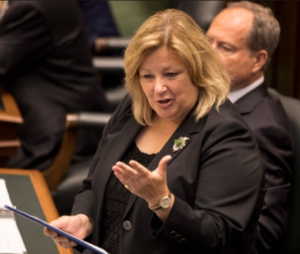 Minister Lisa Thomson “We welcome conversation with any education stakeholder who is prepared to work with us in good faith to ensure our plan continues to serve the best interests of Ontario’s students in a way that works for families and school boards and is fair to our educators.” said Thompson.
Look carefully at some of the phrasing:
“…prepared to work with us in good faith to ensure our plan continues to serve the best interests of students…”
They don’t say they are going to listen.
“…establishing a consistent approach to class sizes for grades 4 to 8 and aligning secondary class sizes more closely with other Canadian jurisdictions.”
An increase in the number of students in classrooms.
“Supporting teacher mobility, greater transparency, fairness, consistency and accountability to school board hiring practices of teachers.”
Teachers aren’t interested in the kind of mobility the government is talking about. Transparency is a two way street.
The document was released on a Friday at the end of the Spring Break when what parents are about most concerned about is knowing that they are going to be able to get on a flight that gets them back so they can have the kids ready for school on Monday.

 By Staff By Staff
March 15th, 2019
BURLINGTON, ON
We are no longer denying that the climate has changed we see it around us every day.
The challenge has been to get to the point where we begin to do something about it. The issue is so huge many people wondered if there was anything they could do individually. Electric cars were being sold but the number of trucks and SUV’s being sold has sky-rocketed.
Cities in Action: Bay Area Climate Change Summit 2019 is driving climate action in the Bay Area. They are connecting people and solutions to create opportunities that will improve our lives today while mitigating climate impacts for the next generations. Because it is the cities – where most of our population lives – and the businesses within them that are taking action to build a hopeful future.
The Cities in Action: Bay Area Climate Change Summit 2019 has created a four day program with sections on:
Climate and the Economy
Energy and Community
Transportation and Health
Bay Area Climate Change Youth Summit
The four day event will have programs taking place at the Royal Botanical Gardens and the McMaster Innovation Centre.

Registration can be done HERE.
Registration can be done HERE.

 By Staff By Staff
March 15th, 2019
BURLINGTON, ON
More on that budget that city council will put their official stamp on Monday night.
Are you ready for photo radar?
It is coming to Burlington, “one of Canada’s best and most livable cities, a place where people, nature and business thrive.”
 Regional police announcing the cameras that will catch stop sign runners. A similar program is coming to the city. The province changed the rules so that municipalities could install photo radar – they are after the red light runners and have identified about 40 + locations where the equipment can be installed.
The plan is to have equipment that can be moved from location to location over a period of time.
The Regional Police have been doing this for some time; one of their jobs is to enforce the Highway Traffic Act.
The good people of Burlington won’t see this during 2019 – it is a pilot program that will first get tested in Toronto where they expect to roll it out in 2020.
Then the rest of the municipal world can jump on that bandwagon.
Burlington tucked away a little over $50,000 to prepare for the service.
They are calling it the Automated Speed Enforcement program.

 By Ray Rivers By Ray Rivers
March 14th, 2019
BURLINGTON, ON
“The governments of Alberta and Canada are close to getting it right on tackling carbon emissions…” Janet Annesley, senior vice-president, Husky Energy
Canada’s environment minister, Catherine McKenna, was back in her home town. She took time from a busy schedule of meetings, including Hamilton’s mayor and the steel industry, to shake hands and meet with some supporters at Hamilton’s Innovation Centre.
 Environment Minister, Catherine McKenna, She expressed confidence that the court challenges over federal carbon pricing by Saskatchewan, last month, and Ontario, next month, will be settled in favour of the federal government. The other Conservative-led provinces of Manitoba and New Brunswick are also backing Ontario’s fight against the federal program.
Alberta’s Jason Kenny has promised to join them and to kill his province’s existing carbon tax should he win the upcoming provincial election there, expected to be announced soon. But Kenny is out of touch. Eliminating the carbon tax would put him markedly at odds with his province’s biggest industry.
Canada’s big oil got floor time at CERAWeek, a conference in Houston sometimes dubbed the Super Bowl of the world’s energy sector. And when they got to the podium they congratulated the Alberta and federal governments on their adoption of carbon taxation. Addressing 4000 delegates from over 70 countries, Janet Annesley and other senior executives were unambiguous.
International investors, even in the oil industry, favour a carbon tax. So what is it that our own Doug Ford, Alberta’s Kenny and the federal Conservative leader Andrew Scheer don’t get? Are they just stuck in the past? Or are they just playing partisanship, hoping for one of those wedge issues?
Sadly that is the flavour of opposition politics today, especially by the Conservative camp. Just look at the socially destructive vitriol being discharged over the so-called SNC Lavalin affair. There is no Lavalin affair. The company is going to trial. And even if the attorney general (AG) had decided to instruct the prosecutor to elect a remediation agreement, it would still have been a legal outcome. Please follow the link below titled ‘Hypocrisy’.
Counting angels on the head of a pin gets tiresome eventually. As we move towards that October federal election date there are real issues which deserve discussion. For example, 2018 wrapped up with an economic rate of growth three times as high as when Trudeau first came into office. Unemployment is at its lowest level in an entire generation.
Manufacturing, despite the walloping US steel and aluminum tariffs, is again leading our growth. Consumer confidence is high again, in part thanks to the tax cuts for middle class Canadians and despite threats about carbon pricing by Ontario’s premier. But there is an expectation that the boom may be nearing an end and our growth rate will be declining. What corrective policies should we now be expecting, and what does that mean for deficits ad our rising national debt?
Ontario and Quebec have been the biggest beneficiaries from the Liberals stimulating our economy, but even Alberta has come back somewhat. Still Alberta is landlocked and its failure to productively engage with its provincial partners, primarily in BC and Quebec, are mitigating against its desire to move more oil to overseas markets. What can be done to further assist that province?
Oil futures will never be as bright as they had been in oil’s history. And the oil industry gets that. They know that the federal approval for, and its ultimate acquisition of, the Trans Mountain pipeline was in recognition of Alberta embracing carbon taxation. That policy enabled Canada to sign onto the international Paris climate agreement.
We’re in this together – climate change knows no regional nor national boundaries. Once considered an enemy, Alberta’s NDP premier has shown herself to be a good friend to the oil producing sector. And her carbon tax helps unite rather than divide. That is as true within the province as it should be within the country.
As the Husky oil executives put it at the Houston conference, “The nice thing about the current policy is that it is deemed equivalent from the federal government,” “We would like to see policy that is recognized nationally, and ideally at the international level, in order to support our trade diversification and pipeline goals.”
 Ray Rivers writes weekly on both federal and provincial politics, applying his more than 25 years as a federal bureaucrat to his thinking. Rivers was a candidate for provincial office in Burlington where he ran against Cam Jackson in 1995, the year Mike Harris and the Common Sense Revolution swept the province. He developed the current policy process for the Ontario Liberal Party. Ray Rivers writes weekly on both federal and provincial politics, applying his more than 25 years as a federal bureaucrat to his thinking. Rivers was a candidate for provincial office in Burlington where he ran against Cam Jackson in 1995, the year Mike Harris and the Common Sense Revolution swept the province. He developed the current policy process for the Ontario Liberal Party.
Background links:
Carbon Tax – Notley’s Oil Patch –
Unemployment – Hypocrisy–

 By Staff By Staff
March 14th, 2019
BURLINGTON, ON
Province of Ontario requesting input from Burlington residents and businesses to assist with review of regional government system
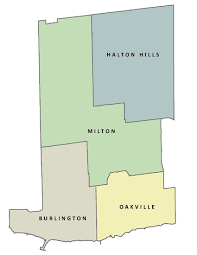 The Region is made up of four municipalities; they might get merged into a single city. There is a potential change in the air that could impact Burlington significantly.
The province is doing a review of how some of the municipalities are organized. Burlington, along with Oakville, Milton and Halton Hills is part of the Region of Halton.
The province is thinking about changing that kind of organization and perhaps doing away with the Regional level of government.
The regional review is examining Ontario’s eight regional governments (Durham, Halton, Muskoka District, Niagara, Oxford County, Peel, Waterloo, York), Simcoe County and their lower-tier municipalities. In total, 82 municipalities are included in the review.
The Province of Ontario is asking Burlington residents and businesses to provide their input on how to improve governance, decision-making and service delivery for regional governments and the municipalities that are members of regional governments. Burlington is a local municipality within the regional government of Halton.
The public consultation is part of a review of regional governments announced by the Province of Ontario on Jan. 15, 2019. The review, led by two appointed Special Advisors, Michael Fenn and Ken Seiling, is focused on ensuring regional governments are working efficiently and effectively. Once the review is completed, the Special Advisors will provide recommendations to improve governance, decision-making and service delivery.
The public is invited to share their views on the regional government system in two ways:
Online – complete an online survey. CLICK HERE
Send written submissions by email to regionalreview@ontario.ca or by mail to Local Government Policy Branch, Ministry of Municipal Affairs and Housing, 777 Bay St, 13th floor, Toronto, Ontario, M5G 2E5
All feedback is due by April 23, 2019.
There is little doubt on where Mayor Meed Ward stands on this issue.
“The City of Burlington is always happy to look for efficiencies within our government system but amalgamating our municipalities into a City of Halton is a non-starter.
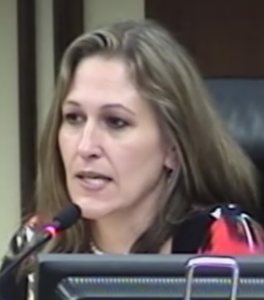 Mayor Meed Ward. “Burlington is already an efficient council: the smallest of Halton Region at seven members, and the smallest of any Ontario municipality of our size. The Region is also efficient and effective; we enjoy being the safest region in Canada, a Triple A credit rating, high satisfaction on our services, and tax increases at or below the rate of inflation, with a number of years of no increases.
“Similar to the one passed at Regional Council, Burlington City Council passed a resolution – unanimously – to protect Burlington’s identity and two-tiered municipal government system. With Council being unanimous once again in its stance and passing of this resolution, it sends a strong message as to where Burlington is on this matter.”
The municipalities can protest as much as they like, Premier Doug Ford had no problem changing the makeup of Toronto city council – he forced changes on that city in the middle of an election.
It is now evident that once Ford makes up his mind he bulldozes – and that may well mean that the Region of Halton will be a thing of the past in the not too distant future.
The immediate impact will be a significant pay cut for the members of Council. For the six Burlington council members that will amount to very close to half of their income.
There will also be some disruption in the delivery of services: Policing is a Regional matter, Education is a Regional matter – does that mean that fire services will become Regional; will Transit become Regional?
Social services are managed at the Regional level.
Affordable housing is managed at the Regional level.
Should the province decide to eliminate the Regional level of government it will take years to complete any reorganization and the cost of governing will rise.

 By Staff By Staff
March 13th, 2019
BURLINGTON, ON
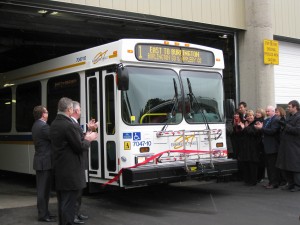 Burlington Transit getting new buses. Now that transit is something the city is prepared to spend money on (they approved the purchase of three new buses) the transit people want to know what you think should be done in terms of frequency of service, peak service hours, key travel destinations and transit connections in the GTHA.
“As Burlington’s population grows, moving around the city should be easy and convenient, including on Burlington Transit”, according to the transit people.
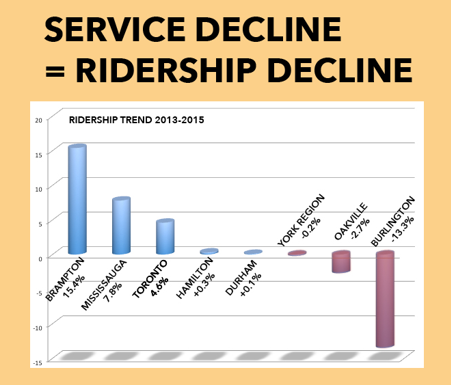 Bfast has consistently provided reliable data setting out where the problems are. A series of drop in sessions are being held by the Transit service for you to learn more about the future vision for Burlington Transit and for you to share your input on what the future is going to hold.
The Drop In sessions will take place on the following dates and at the following locations:
Monday, March 18 – 3 to 6 p.m.
City Hall 426 Brant St.
Wednesday, March 20 – 11 a.m. to 2 p.m.
Central Arena, 519 Drury Ln
Thursday, March 21 – 6 to 9 p.m.
Tansley Woods, 1996 Itabashi Way
The people in Aldershot, Alton and the east end of the city are going to have to truck themselves into the middle of the city to take part.
Hopefully, the Drop in Sessions will be more of a listening exercise than a one way flow of information from them to us.
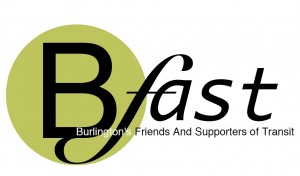 This is also an occasion for Bfast to put together a well-researched paper on what the city needs and where it is needed. This is also an occasion for Bfast to put together a well-researched paper on what the city needs and where it is needed.
There are changes in the air – make sure the changes reflect what you need – take part.
 Director of Transit Sue Connors Burlington currently has a Director of Transit who brought a strong past with her – she changed the way Brampton put its buses to use – that city once had a terrible transit service. When Sue Connor left it was one of the best in the province.
She listens and genuinely wants a transit that works for people who use buses. Let he know what you think.

|
|
 By Staff
By Staff Often described as putting Burlington “on the map”, the Brant Inn featured many legendary entertainers such as Louis Armstrong, Benny Goodman and Ella Fitzgerald.
Often described as putting Burlington “on the map”, the Brant Inn featured many legendary entertainers such as Louis Armstrong, Benny Goodman and Ella Fitzgerald.




















 Ray Rivers writes regularly on both federal and provincial politics, applying his more than 25 years as a federal bureaucrat to his thinking. Rivers was once a candidate for provincial office in Burlington. He was the founder of the Burlington citizen committee on sustainability at a time when climate warming was a hotly debated subject. Ray has a post graduate degree in economics that he earned at the University of Ottawa. Tweet @rayzrivers
Ray Rivers writes regularly on both federal and provincial politics, applying his more than 25 years as a federal bureaucrat to his thinking. Rivers was once a candidate for provincial office in Burlington. He was the founder of the Burlington citizen committee on sustainability at a time when climate warming was a hotly debated subject. Ray has a post graduate degree in economics that he earned at the University of Ottawa. Tweet @rayzrivers








 On Saturday March 16th 2019, Detectives with the Child Abuse and Sexual Assault Unit (CASA) commenced an investigation after a 23 year old female reported that she had been sexually assaulted in the area of Lakeshore Rd. and Elizabeth Street in the City of Burlington.
On Saturday March 16th 2019, Detectives with the Child Abuse and Sexual Assault Unit (CASA) commenced an investigation after a 23 year old female reported that she had been sexually assaulted in the area of Lakeshore Rd. and Elizabeth Street in the City of Burlington.











 Movies Under the Stars
Movies Under the Stars
 Mayor Marianne Meed Ward is going to hold a Town Hall at the
Mayor Marianne Meed Ward is going to hold a Town Hall at the 










 This is also an occasion for Bfast to put together a well-researched paper on what the city needs and where it is needed.
This is also an occasion for Bfast to put together a well-researched paper on what the city needs and where it is needed.
